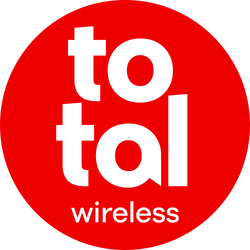 Best MVNO OverallUS Mobile Unlimited Premium | ||||
Price$44 | ||||
NetworkChoice of AT&T (Dark Star), T-Mobile (Light Speed), or Verizon (Warp) | ||||
DataUnlimited (without high-speed cap) | ||||
| | ||||
| |
Best MVNOs for 2026
Our best overall MVNO phone plan for 2026 is US Mobile's Unlimited Premium, while TextNow offers the cheapest choice starting at $0.

Our top pick for the best MVNO in 2025 is US Mobile for its ability to offer service on all three major networks, plus its affordable price point for a premium data experience.
Switching to an MVNO, or mobile virtual network operator, is the most affordable way to get phone service and lower your cell phone bill overall. While an MVNO typically doesn’t offer the same perks and network priority, it can still provide reliable phone service with plenty of features at a fraction of the cost of a traditional plan from a major network provider like AT&T, Verizon, or T-Mobile. Depending on your individual needs, different MVNOs will fit the bill, so we put together a handy guide on the best MVNOs for unique use cases.
Summary: Best MVNO Phone Plans
Methodology: How we picked the best MVNOs
MVNOs have become a popular choice for saving money on your phone bill, but with more than 50 active ones in the U.S., picking the right one requires more than just a price consideration.
When making our picks, we also look at:
- Network coverage and performance. All MVNOs (mobile virtual network operators) use the cellular network of a major network operator (MNO), such as AT&T, Verizon, or T-Mobile. That means they can provide the same reliability as a plan from one of those Big 3 carriers. But not all perform the same or have equal network priority.
- Value (what’s included). MVNO phone plans include fewer perks than a traditional postpaid plan, but plenty of these plans still offer great value at an affordable price.
- Real user reviews. We look at how people rate the service in real life, to ensure that everything that’s advertised and promised is actually fulfilled.
Each of these factors is considered with its own weight, leading to a score that helps us determine the best picks.
Beginner’s guide to MVNOs
What is an MVNO?
An MVNO is a mobile virtual network operator, which is just a carrier that is able to provide cellular service without owning the cellular towers. An MVNO piggybacks off a major carrier’s network (like AT&T, T-Mobile, or Verizon), but because it doesn’t own the towers – and doesn’t have to pay for maintaining or expanding them – it can offer its phone service for a much cheaper price.
An MVNO is also labelled as a prepaid plan, as all MVNOs operate under a prepaid billing system with no credit checks and more flexible plan management.
>> Read more: Comparing prepaid vs. postpaid phone plans
How does an MVNO work?
An MVNO purchases access to an MNO’s network at wholesale pricing, allowing it to resell service to you – the customer – at a discounted price.
While MVNOs don’t own their own networks, they still handle their own billing, support, plan management, and SIM or eSIM activation. So if you’re on a plan with, for example, Mint Mobile, you wouldn’t contact T-Mobile for issues with your data or signal, you would contact Mint Mobile directly even though it uses the T-Mobile network.
>> Read more: What is an MVNO? How Do MVNOs Work?
Types of MVNOs
The types of MVNOs can be broken down into which MNO they’re borrowing their network from: T-Mobile, AT&T, or Verizon.
T-Mobile MVNOs include: Mint Mobile, Metro by T-Mobile, Tello, Ultra Mobile, Google Fi.
AT&T MVNOs include: Cricket Wireless, H2O Wireless, Consumer Cellular.
Verizon MVNOs include: Visible, Total Wireless, Straight Talk, Xfinity Mobile.
Types of MVNO phone plans
Most MVNOs will offer different types of cheap phone plans, which can include:
- Unlimited data plans.
- No data (talk & text only) plans.
- Tablet (data-only) plans.
- Family phone plans.
- Senior phone plans.
- Kids & teens phone plans.
- Business phone plans.
What are the advantages of an MVNO?
An MVNO has many advantages that work for a variety of people who are looking to save money on phone service:
- More affordable. MVNOs’ phone plans can range from $0-$65/month, in comparison to postpaid plans, which range from $50-$100.
- No contracts. More flexibility to change or cancel your plan as your needs change.
- No credit checks. More accessible for those new to credit or with some credit damage.
- Coverage. Because MVNOs lease access to the same networks as the Big 3, you get to enjoy the same coverage at a fraction of the price.
What are the disadvantages of an MVNO?
If your phone service needs revolve around network prioritization, high data limits, or even phone deals, you may be better off on a postpaid plan.
- Fewer phone options. With an MVNO, you have fewer options for phone deals or promotions, or more specifically, device financing.
- Customer support. Because most MVNOs operate online to be able to provide even deeper savings, you don’t have the same hands-on assistance options as you would with a major carrier with ample retail locations.
- Limited perks. For the sake of keeping prices low, most MVNO phone plans don’t include extra perks.
- Deprioritized data. MVNOs typically do not get the same network priority reserved for the major carrier’s own customers.
Which MVNO has the best data coverage?
Most MVNOs run on either AT&T, T-Mobile, or Verizon’s networks, so the best data coverage will depend on which Big 3 network a particular MVNO runs on. According to Allconnect, if you’re looking for the best all-purpose LTE coverage in the U.S., that would be Verizon with its 4G LTE service available to 70% of the nation. For 5G coverage, however, Verizon has the least amount of coverage. Instead, T-Mobile has the best with 54% of national coverage, the most out of any providers. Meanwhile, AT&T is best for balanced coverage when considering both LTE and 5G.
Note that some MVNOs, like US Mobile, can use all three networks, which would be the most comprehensive coverage offered by any carrier.
How to pick out the best MVNO
- Pick out the network you need coverage on. To pick the right MVNO, first find out which MNO’s network works best in your area. Alternatively, if you frequently travel (domestically), you can narrow down the list to all MVNOs that can allow you to access multiple networks.
- Determine your data needs. Narrow down the list even more by figuring out how much data you actually need. Even with an unlimited data plan, most will have high-speed data caps that you need to read in the fine print to determine which one will work for your data needs. (Unlimited plans aren’t really unlimited in many cases.)
- Look for perks and extras if needed. Specifically, if you’re in need of mobile hotspot capability or data roaming, beware that not all MVNOs will support those features, or the allowance may be too small for your needs.
- Be honest about the level of customer support you want. There are enough MVNOs that do have retail stores or in-person assistance available, so if that’s the level of customer support you need, then eliminate any online-only MVNOs from your consideration.
- Set your budget. Lastly, and most importantly, work within your budget.
MVNO alternatives
The alternative to an MVNO is an MNO – a major network operator – such as AT&T, T-Mobile, or Verizon. These are often called the Big 3, and they offer both prepaid and postpaid plans, although typically at higher prices than MVNOs.
Related Posts

12.19.25
Best Cheap Cell Phone Plans: The Ultimate Guide to Finding an Affordable Phone Plan
by Valeria

12.16.25
Best Affordable Unlimited Data Plans, Starting at $0
by Valeria

12.15.25
What is an MVNO? How MVNOs work, plus the best MVNOs
by Valeria

11.10.25
How to pick a phone plan: Your complete buying guide
by Valeria









